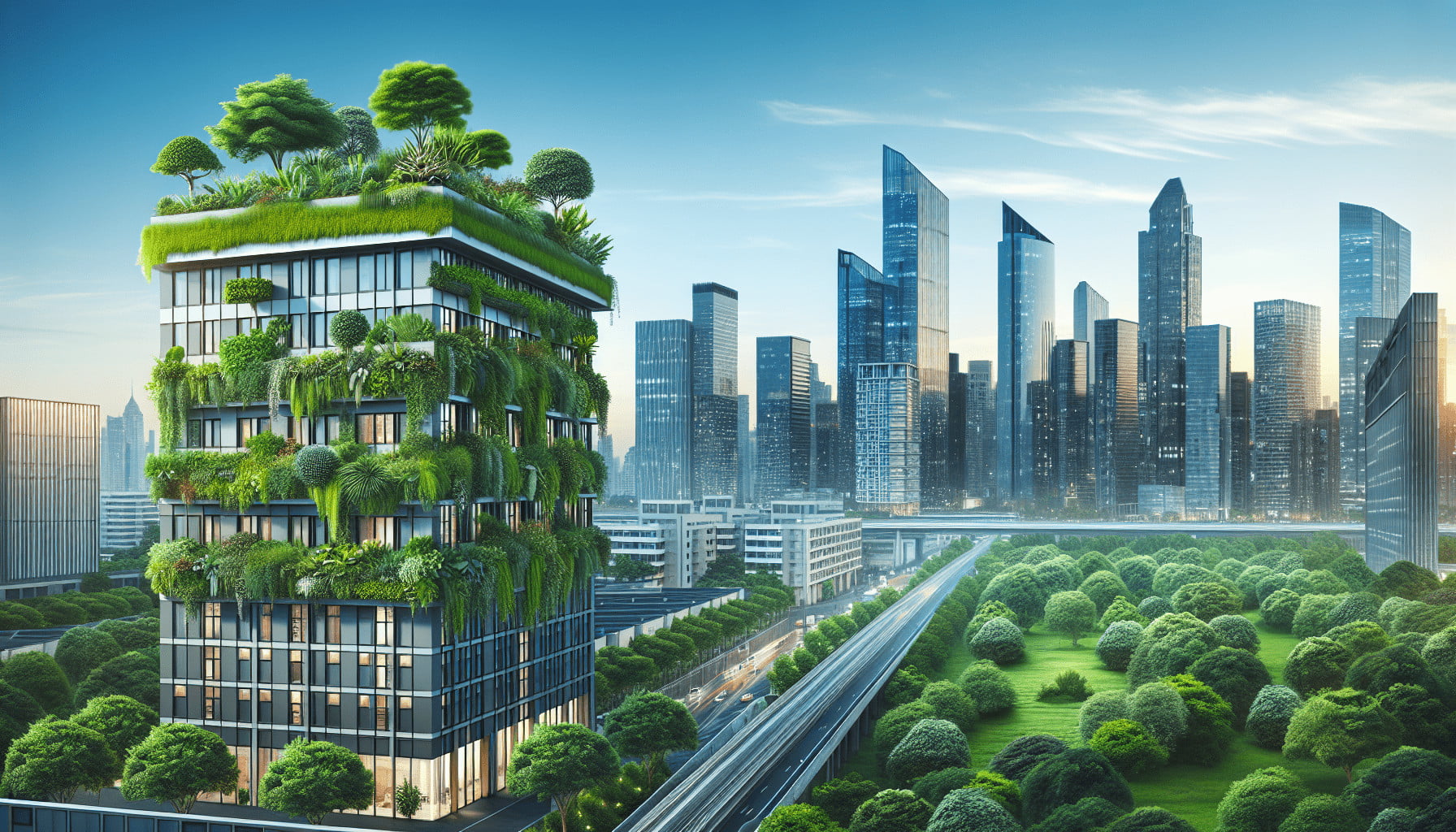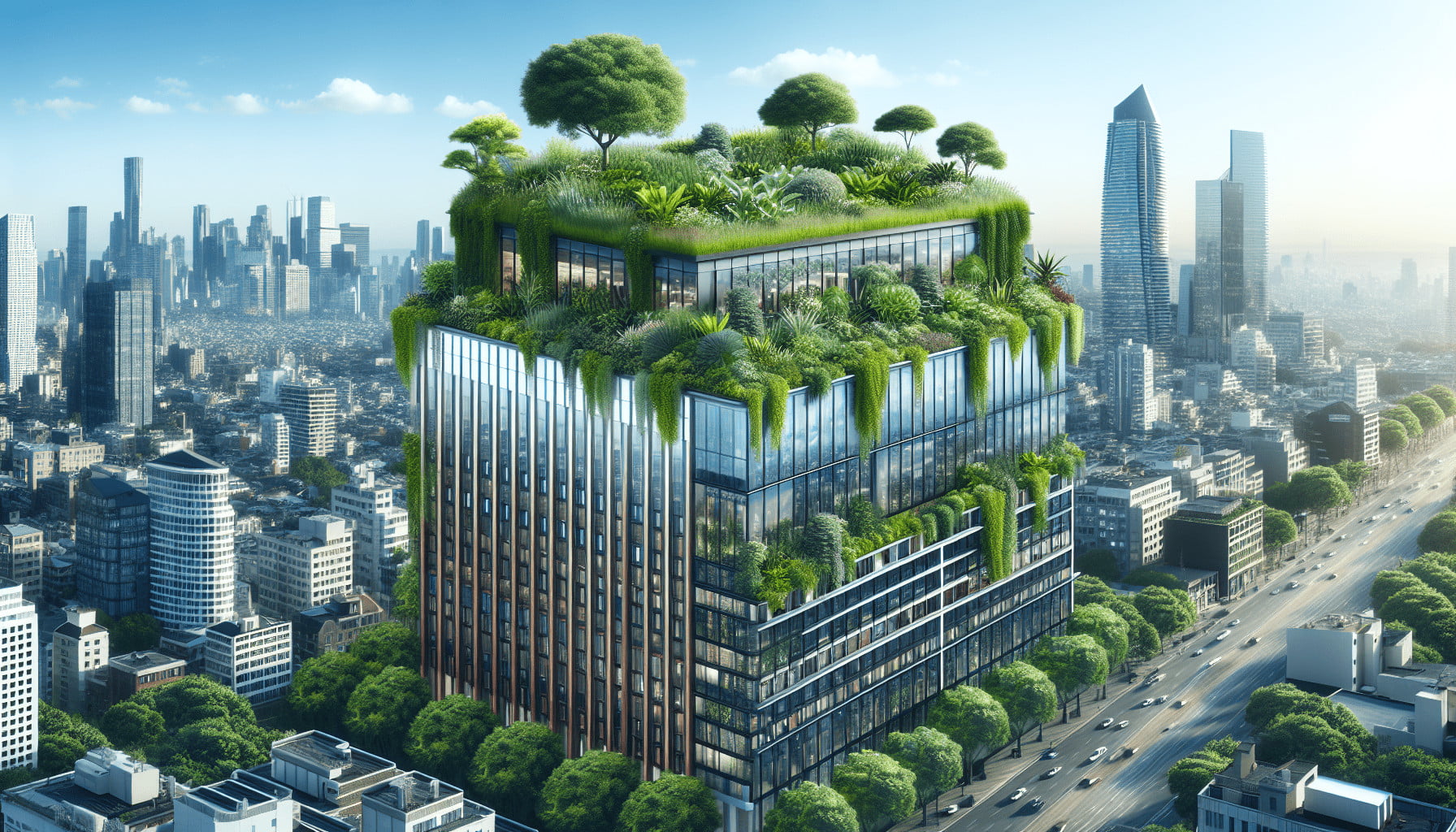Have you ever wondered about the role green roof systems play in the increasingly urgent quest for sustainable urban development? As our cities expand and our environmental challenges grow, the search for efficient, eco-friendly solutions becomes ever more critical. One promising innovation that stands out amidst this labyrinth of concrete and steel is the green roof system. In this article, let’s dissect how these living rooftops contribute to sustainability and why they might be a cornerstone of the cities of the future.

What Are Green Roof Systems?
First things first, it’s essential to understand what a green roof system actually is. Green roofs—sometimes referred to as vegetated or eco-roofs—are rooftops partially or completely covered with vegetation, planted over a growing medium, and installed over a waterproofing membrane. These systems can vary in complexity from simple, lightweight installations to elaborate designs featuring a diverse array of plant life.
Types of Green Roof Systems
Green roof systems generally fall into two categories: extensive and intensive. Each type offers different benefits and serves various purposes depending on the needs and context of the building.
Extensive Green Roofs
These are lightweight systems commonly used where the structural load capacity of a building is limited. They require minimal maintenance and usually host drought-resistant plants.
Characteristics of Extensive Green Roofs:
| Feature | Description |
|---|---|
| Soil Depth | Shallow (2-6 inches) |
| Vegetation Type | Mosses, Sedum, Herbs, and Grasses |
| Weight | Light (15-50 pounds per square foot) |
| Maintenance | Low (mostly watering and occasional weeding) |
| Primary Uses | Stormwater management, thermal regulation, biodiversity |
Intensive Green Roofs
These are heavier, more elaborate systems that can support a wider variety of plant life, including shrubs and even small trees. They require more maintenance but can offer greater ecological and recreational benefits.
Characteristics of Intensive Green Roofs:
| Feature | Description |
|---|---|
| Soil Depth | Deep (6 inches to several feet) |
| Vegetation Type | Grasses, Perennials, Shrubs, Trees |
| Weight | Heavy (80-150 pounds per square foot) |
| Maintenance | High (regular watering, pruning, and weeding) |
| Primary Uses | Public green space, rooftop gardens, recreational areas |
Environmental Benefits of Green Roof Systems
Enhancing Urban Biodiversity
One of the most fascinating benefits of green roofs is their ability to act as mini-ecosystems, providing habitats for various species of insects, birds, and other small animals. In an environment where natural spaces are dwindling, these rooftops can offer critical refuges for flora and fauna.
Improving Air Quality
Plants naturally filter out airborne pollutants and carbon dioxide, converting them into oxygen through photosynthesis. By installing a green roof, you can contribute to cleaner air in urban settings where pollution levels often run high.
Stormwater Management
Green roofs absorb rainwater, reducing the volume and rate at which it runs off into stormwater systems. This helps mitigate the risk of flooding and decreases the burden on drainage systems, especially during heavy rainfall events.
Thermal Regulation
These systems also play a part in controlling urban heat islands, areas where temperatures are significantly higher than the surrounding countryside due to human activities. Green roofs insulate buildings, reducing the need for air conditioning in the summer and heating in the winter.
Economic Benefits of Green Roof Systems
While the initial investment in a green roof system can be higher than traditional roofing, there are several long-term economic advantages that can offset these costs.
Energy Savings
By improving thermal regulation, green roofs lower the energy required for heating and cooling buildings. This translates into reduced utility bills and, over time, significant financial savings.
Increased Roof Longevity
Green roofs protect the underlying roofing materials from extreme temperature fluctuations and harmful UV radiation. As a result, they extend the lifespan of the roof membrane, reducing maintenance and replacement costs.
Property Value Enhancement
Installing a green roof can increase the market value of a property. Not only does it contribute to the aesthetic appeal of the building, but it also signals a commitment to sustainability, which can be an attractive feature for potential buyers or tenants.
Incentives and Grants
Many local governments offer financial incentives, grants, and tax breaks to encourage the installation of green roof systems. These programs can help offset the initial setup costs and make green roofs more financially viable.
Social Benefits of Green Roof Systems
Improved Mental and Physical Health
Access to green spaces is linked to numerous mental and physical health benefits, including reduced stress levels, improved mood, and increased opportunities for physical activity. Green roofs can provide urban residents with needed nature exposure, contributing to overall well-being.
Community Building
Green roofs can serve as community gardens or recreational areas, providing spaces for people to come together, share experiences, and build community bonds. This can be particularly valuable in densely populated urban environments where communal spaces are often limited.
Educational Opportunities
Green roofs can act as live classrooms, offering educational institutions unique opportunities to teach students about ecology, sustainability, and environmental stewardship. They present a hands-on way to learn about plant life, water cycles, and solar energy, among other subjects.

Challenges and Limitations
Despite their many benefits, green roof systems are not without challenges. It’s essential to be aware of these limitations to make informed decisions about their implementation.
Initial Costs
The upfront cost of installing a green roof system can be prohibitive for some. This includes expenses for structural assessment, specialized materials, and skilled labor. Although there are long-term savings, the initial investment can be a barrier.
Structural Requirements
Not all buildings are suitable for green roof installations. The additional weight of soil and plants requires a structurally sound building that can support this load. Structural assessments and potential reinforcements can add to the cost and complexity of a project.
Maintenance Needs
While extensive green roofs require less maintenance, intensive green roofs need regular care, including watering, fertilizing, and pruning. This requires a commitment to ongoing upkeep, potentially increasing operational costs and labor requirements.
Climate Considerations
Different climates pose unique challenges for green roofs. In arid regions, water scarcity can make the maintenance of lush vegetation difficult, while extreme cold can limit the types of plants that can survive. It’s essential to choose vegetation and design solutions that are well-adapted to the local climate.
Case Studies of Green Roof Systems
The New York City Case Study
New York City has been at the forefront of green roof implementation, with numerous projects showing how effective these systems can be in urban environments. For example, the Jacob K. Javits Convention Center’s green roof has become a notable success story. Covering nearly 7 acres, this green roof has provided significant insulation benefits, reduced stormwater runoff, and created a habitat for local wildlife, including thousands of honeybees.
The Green Roof in Chicago’s City Hall
Chicago’s City Hall showcases an exemplary green roof that demonstrates the system’s benefits in real-time. Installed in 2001, this green roof has contributed to considerable energy savings, temperature reduction in the building, and enhanced biodiversity. It serves as a model for other cities looking to adopt similar practices.
Stuttgart’s Green Roof Policies
Stuttgart, Germany, has long been a leader in green roof adoption, with policies in place to encourage their use. The city offers financial incentives and mandates green roofs for new flat-roof buildings exceeding a specific size. This proactive approach has resulted in widespread green roof coverage, contributing to urban cooling, stormwater management, and enhanced ecological diversity.
Future of Green Roof Systems
Technological Innovations
The future of green roofs is likely to be shaped by technological advancements. Innovations such as smart irrigation systems, lightweight substrates, and advanced materials can make green roof installations more efficient, cost-effective, and user-friendly.
Integrative Urban Planning
As cities increasingly recognize the importance of sustainable practices, green roofs are likely to become integral to urban planning initiatives. This could involve integrating green roofs with other green infrastructure elements like green walls, urban forests, and permeable pavements to create cohesive, sustainable urban ecosystems.
Policy and Advocacy
Broader implementation of green roof systems will require supportive policies and strong advocacy. Governments and organizations will need to develop and enforce regulations that encourage green roof adoption, provide financial incentives, and educate the public about their benefits.
Steps to Implement a Green Roof System
If you’re considering a green roof for your building, here are the steps you can follow to ensure a successful installation.
Assess Feasibility
Start by conducting a feasibility study to determine whether your building can support a green roof. This will involve structural assessment, cost analysis, and a review of local building codes and regulations.
Design and Planning
Work with architects, engineers, and green roof specialists to design a system that meets your needs and respects the unique characteristics of your building. This includes selecting suitable vegetation, planning irrigation systems, and ensuring proper drainage.
Installation
Choose experienced contractors to carry out the installation. Ensure they follow best practices and adhere to all safety protocols. The installation process will typically involve laying a waterproof membrane, installing drainage layers, adding soil, and planting vegetation.
Maintenance Plan
Develop a maintenance plan tailored to your green roof’s specific needs. This should include scheduling regular inspections, watering, weeding, and making any necessary repairs to ensure the system remains healthy and functional.
Conclusion
Green roof systems stand out as a multifaceted solution to many of the environmental, economic, and social challenges faced by urban areas today. While not without their challenges, the adoption of these living rooftops offers unparalleled opportunities for making our cities more sustainable, resilient, and enjoyable places to live. If you’re looking to make a lasting impact, both on the world around you and on future generations, green roofs are an investment well worth considering.
Remember, the journey towards sustainable development does not involve single, isolated steps. It is a collective effort consisting of innovative solutions like green roof systems, all working together to build a greener, more sustainable future.
